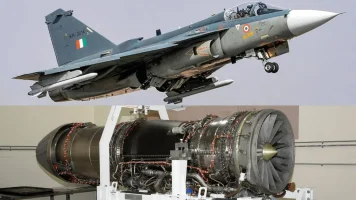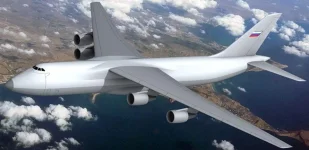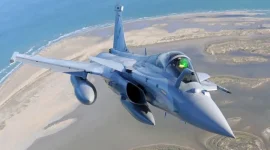- Views: 4K
- Replies: 8
The Indian Air Force (IAF) is reportedly evaluating the acquisition of Russia’s advanced R-37M Vympel long-range air-to-air missile.
According to news agency reports, this move is a key part of India's strategy to significantly enhance its air combat capabilities and secure a decisive advantage over the air forces of neighbouring China and Pakistan.
Known by its NATO designation AA-13 'Axehead', the R-37M is among the world's most capable long-range air-to-air missiles.
It is specifically designed to neutralise high-value "force multiplier" assets such as enemy fighter jets, strategic bombers, and crucially, Airborne Early Warning and Control (AEW&C) aircraft from extreme distances.
With a publicly stated range of over 200 kilometres, and some variants reportedly capable of reaching up to 400 km, the hypersonic missile travels at speeds exceeding Mach 6, making it extremely difficult to evade.
The primary platform for this powerful weapon in the IAF would be the Sukhoi Su-30 MKI, which serves as the backbone of India's fighter fleet with over 260 aircraft in service.
Integrating the R-37M would provide IAF pilots the ability to engage hostile aircraft, such as Pakistan’s F-16s and China’s 5th-generation J-20 stealth fighters, from well beyond their retaliation range. This "first-shot" capability is a critical component of establishing air superiority in any potential conflict.
This interest in advanced aerial weaponry follows the IAF's recent strategic successes.
In the "Operation Sindoor" in May 2025, the land-based S-400 Triumf air defence system reportedly proved its formidable long-range engagement capacity by neutralising multiple aerial targets over 300 kilometres away.
This event highlighted the immense value of long-range strike systems in modern warfare and is seen as a key driver behind the IAF's push to equip its fighter jets with similar standoff power.
Currently, the IAF's beyond-visual-range (BVR) arsenal is robust, featuring the indigenously developed Astra Mk-1 missile (110 km range) and the highly effective French MBDA Meteor missile (over 150 km range) on its Rafale jets.
While the Meteor is considered a world leader due to its ramjet engine, the R-37M would introduce an "ultra-long-range" capability, allowing the IAF to create a layered air-to-air threat environment that is exceptionally challenging for any adversary to penetrate.
This acquisition is also being considered as a vital capability enhancement while the procurement of 114 new Multi-Role Fighter Aircraft (MRFA) remains ongoing.
Defence analysts suggest the R-37M's most significant tactical advantage would be its ability to target enemy AEW&C platforms, like China’s KJ-500 and Pakistan’s Saab 2000 Erieye.
These aircraft act as the "eyes and ears" for an air force, managing the air battle and directing fighters. By destroying them from a safe distance, the IAF could effectively blind and disrupt an enemy's entire air operations at the very start of a conflict.
The seamless integration of the R-37M is considered highly feasible due to the Russian origin of the Su-30 MKI jets, which would minimise the need for extensive modifications.
The missile employs a sophisticated guidance system, using its own active radar for the final phase of attack, which makes it highly precise and resistant to electronic jamming.
This potential procurement also highlights the enduring strategic defence partnership between India and Russia. Despite India's increasing diversification of military suppliers, Russia remains a cornerstone of India's defence infrastructure.
It is possible that any deal for the R-37M could include provisions for licensed production in India, aligning with the government's "Make in India" policy to foster self-reliance in the national defence sector.



